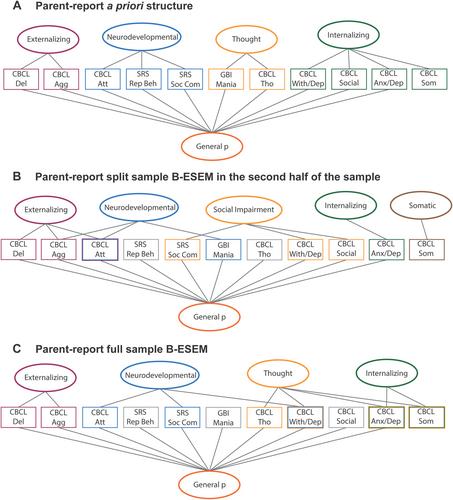Due to limitations of categorical definitions of mental illness, there is a need for quantitative empirical investigations of the dimensional structure of psychopathology. Using exploratory bifactor methods, this study investigated a comprehensive and representative structure of psychopathology in children to better understand how psychotic-like experiences (PLEs), autism spectrum disorder (ASD) symptoms, impulsivity, and sensitivity to reward and punishment, may be integrated into extant general factor models of psychopathology.
We used seven child-report and three parent-report instruments capturing diverse mental health symptoms in 11,185 children aged 9–10 from the Adolescent Brain Cognitive DevelopmentSM (ABCD) Study. We built on previous modeling frameworks by conducting both split sample and full sample factor analytic approaches that harnessed recent methodological advances in bifactor exploratory structural equation modeling (B-ESEM) to examine a wide range of psychopathology measures not previously integrated into a single analysis. Validity of psychopathology dimensions was examined by investigating associations with sex, age, cognition, imaging measures, and medical service usage.
All four factor analytic models showed excellent fit and similar structure within informant. PLEs loaded most highly onto a general psychopathology factor, suggesting that they may reflect non-specific risk for mental illness. ASD symptoms loaded separately from attention/hyperactivity symptoms. Symptoms of impulsivity and sensitivity to reward and punishment loaded onto specific factors, distinct from externalizing and internalizing factors. All identified factors were associated with clinically relevant risk factors, providing preliminary evidence for their construct validity.
By integrating diverse child-report and parent-report psychopathology measures for children in the ABCD sample, we deliver data on the quantitative structure of psychopathology for an exceptionally large set of measurements and discuss implications for the field.


